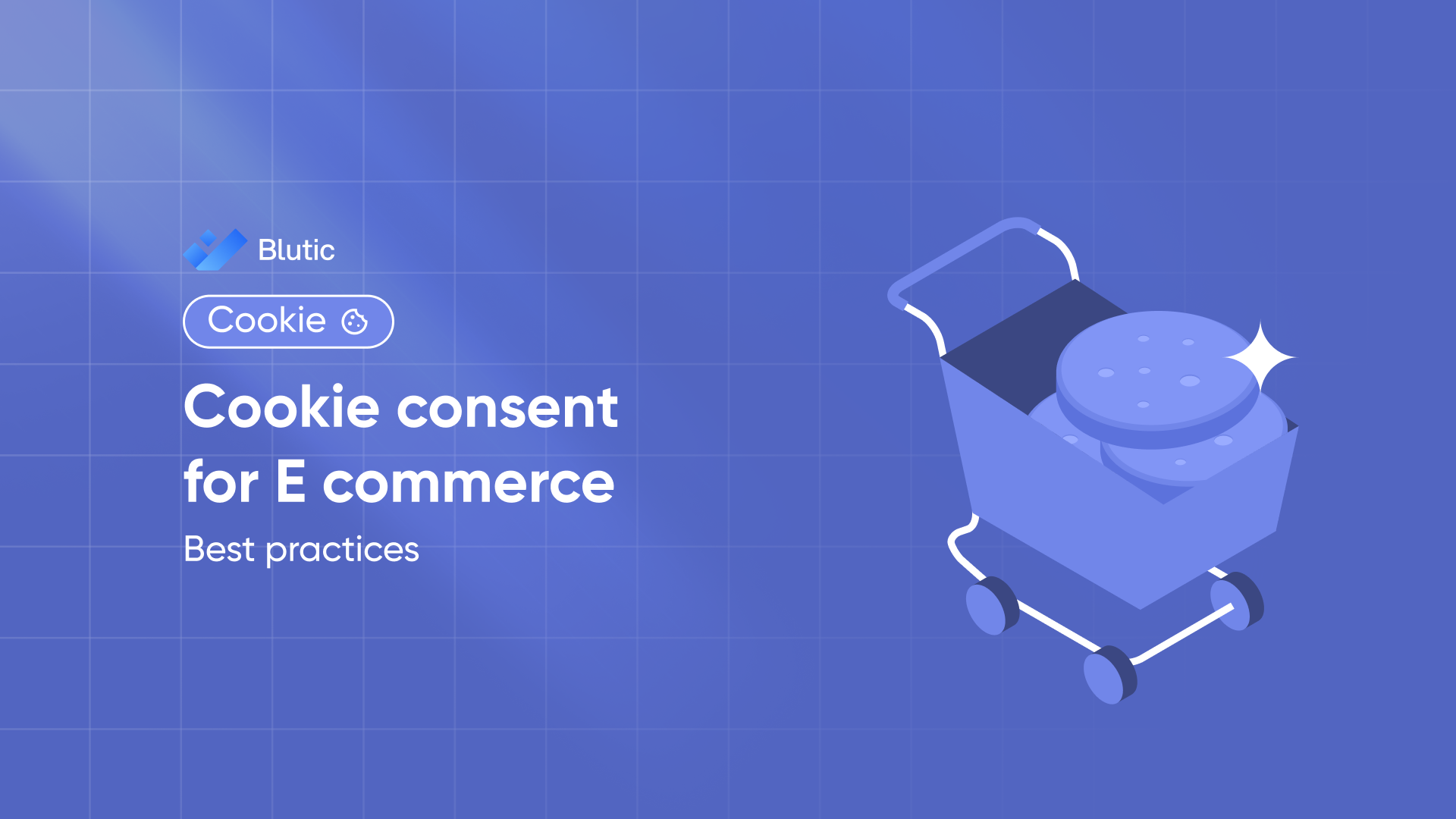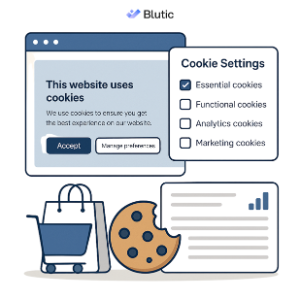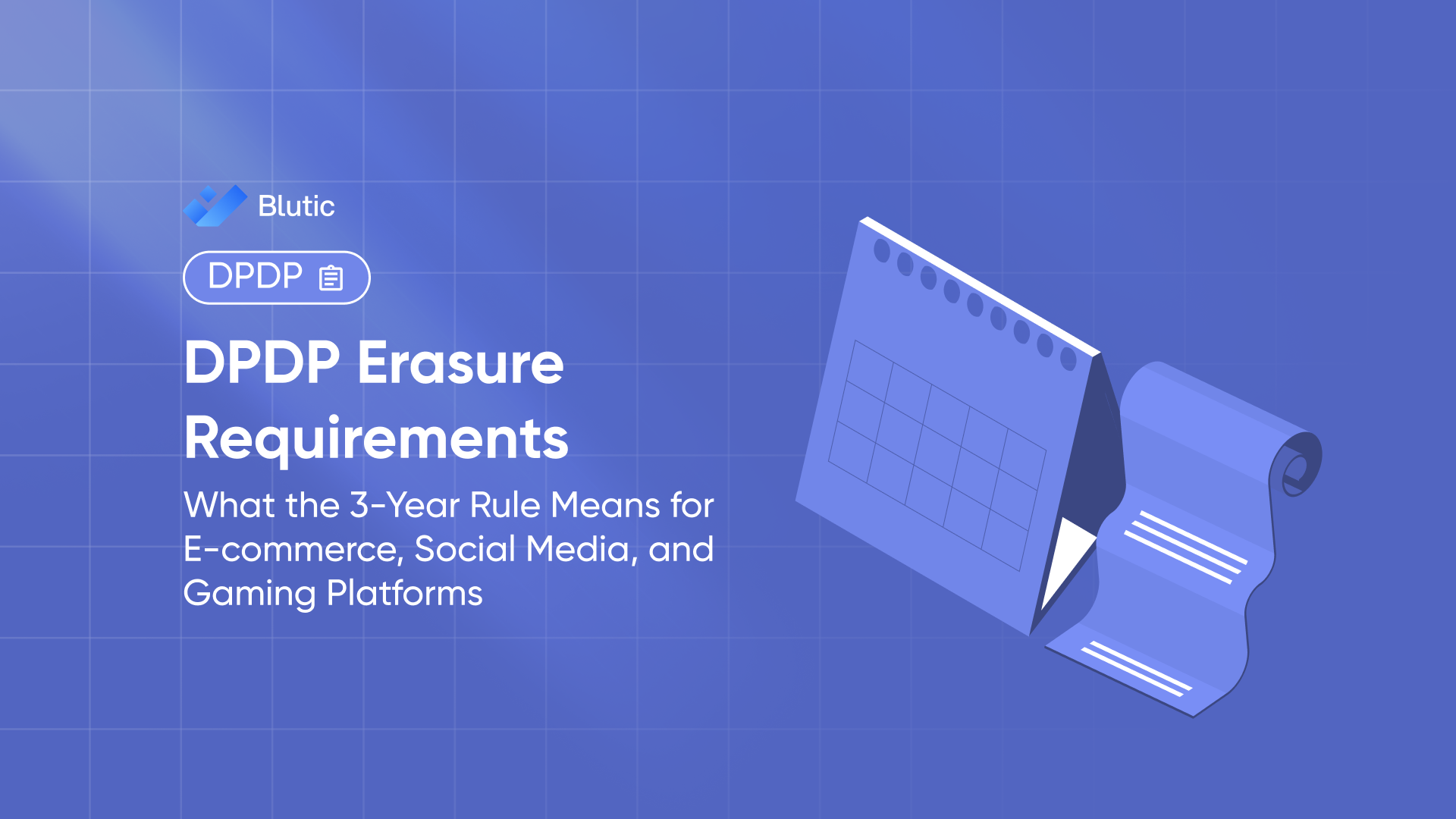Cookie Consent for E-Commerce: Best Practices for 2025

Cookie Consent for E-Commerce: Best Practices for 2025
Introduction: Why Cookie Consent Matters in E-Commerce
If you're running an e-commerce business in India, cookie consent is no longer optional it's a legal necessity under the Digital Personal Data Protection Act (DPDPA). Every product page visited, every “Add to Cart” clicked, and every ad shown involves user data. Failing to obtain proper consent could cost you more than a sale, it could lead to penalties, loss of trust, and non-compliance.
This guide shares best practices to ensure your e-commerce platform is both user-friendly and DPDPA-compliant using an effective cookie consent management platform like Blutic.
1. Know the Legal Framework: DPDPA & Cookie Compliance
The DPDP Act requires businesses to get free, informed, specific, and unambiguous consent before placing any non-essential cookies (like analytics or marketing cookies). That means:
- No pre-ticked boxes
- No "cookie walls" that force acceptance
- Clear language on what’s being tracked and why
For e-commerce platforms using tools like Google Analytics, Meta Pixel, or retargeting ads, this is critical.
2. Use a Consent Management Platform (CMP)
A CMP like Blutic helps automate your cookie consent process across your website and integrations.
Key features to look for:
- Customisable cookie banners for mobile + desktop
- Geo-targeting for global users (GDPR, CPRA, etc.)
- Multi-language support for regional compliance
- Consent logs & audit trails for regulatory readiness
- GTM, Shopify, WordPress, and WooCommerce integrations

3. Categorise Your Cookies Clearly
Cookies should be grouped into categories:
- Essential cookies: Required for cart functionality, login, checkout, etc.
- Functional cookies: Remember user preferences
- Analytics cookies: Track usage for optimization
- Marketing cookies: Retargeting, ads, social sharing
Allow users to accept or reject each category with default for non-essential ones.
4. Display a Well-Designed Cookie Banner
Your cookie banner should:
- Be prominently displayed (not hidden in the footer)
- Use plain language (avoid legal jargon)
- Include a “Manage Preferences” option
- Link to your privacy and cookie policy
Blutic offers custom cookie banner templates optimized for conversion without compromise.
5. Block Cookies Until Consent Is Given
Do not fire any non-essential cookies until consent is recorded. This can be done easily with Blutic’s tag manager integrations, including:
- Google Tag Manager (GTM) cookie blocking
- Facebook Pixel cookie consent
- Cookie consent with Google Analytics
6. Track, Log & Report Consent
For audit purposes, maintain:
- Timestamped consent logs
- Versioned cookie policy records
- Easy export for compliance reviews
Blutic automatically handles consent logs, changes, and withdrawal requests, helping you always stay audit-ready.
7. Optimize for Performance & Conversions
Cookie banners shouldn’t slow down your site or hurt conversions. Choose a lightweight, non-code, and developer-friendly platform like Blutic.
- No impact on page speed
- Easy integration with Shopify, WooCommerce, Headless CMS
- A/B test banner positions and messaging
8. Don’t Risk Penalties Go DPDPA-Ready Now
India’s DPDPA empowers users and fines violators. If your e-commerce store uses cookies, you are liable.
Penalties can go up to ₹250 crore.
Blutic helps e-commerce businesses become DPDPA-ready with:
- Affordable pricing
- Quick setup
- Custom branding
- Scalable support
As privacy laws evolve, cookie consent is more than compliance, it’s a sign of trust. For e-commerce platforms, getting it right means higher trust, better engagement, and legal peace of mind.
Blutic helps you get there seamlessly.
Frequently Asked Questions
You must collect explicit consent before placing non-essential cookies and maintain a log of those consents for compliance purposes.
Fines can go up to ₹250 crores, along with reputational damage and legal scrutiny.
More Blogs
Get the indise scoop: the latest tips, tricks, & product updates
%20.png)




